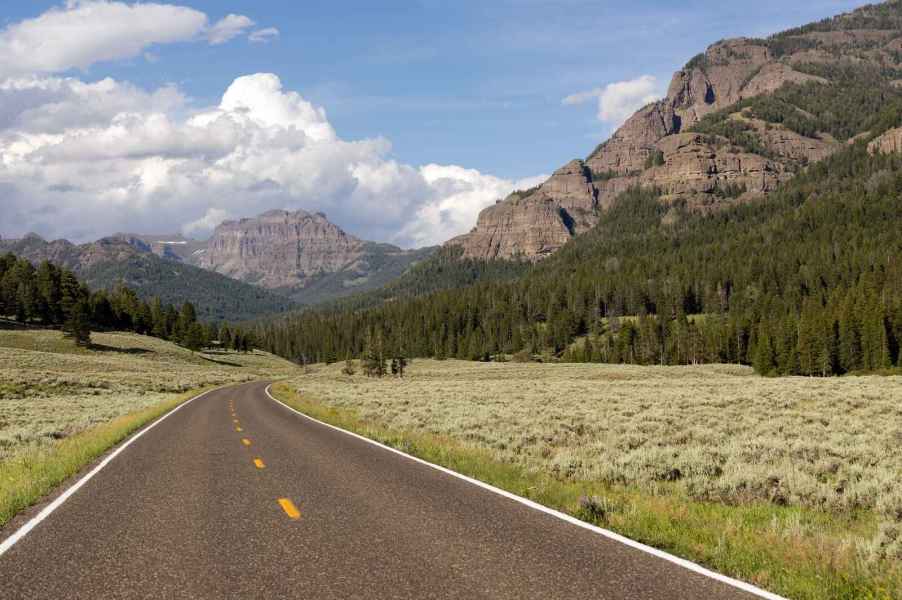
How to survive in your car after a remote breakdown
I’ll admit it. Well, I already have, years ago, in my MotorBiscuit author bio. I’m addicted to survival content. It started in early childhood with my visits to the backwoods in the Upper Peninsula of Michigan.
I first traveled up north at age four, in the dead of winter. I was immediately hooked to the quietly overwhelming outdoors. After that, I discovered Little House on the Prairie books. Next was Gary Paulsen’s “Hatchet,” which remains a cherished favorite. From there, I inhaled everything from shows, movies, and novels describing some person’s or group’s intense pull into and grit-filled push out of the remote wilderness. I continued to visit the UP over many consecutive summers and winters.
Don’t mind me threading my automotive interests with survival tactics. Survival situations require three basic elements: shelter, fire, and water. Here’s how to ensure your car provides all three and then some.
Shelter
Good news! This is a relatively easy one. Your car is, in fact, a shelter. Don’t leave your vehicle in a remote breakdown. It’s a landmark for a search party. A car is easier to spot than a single human. What’s more, you can live in your car for pretty much as long as you need to, considering the surrounding circumstances.
Even if your car is damaged from an accident, if you’re far from help, you should stay close to it. It should be of some use as a partial shelter, even. Again, responders will be looking for it as a starting point.
Fire
In survival situations, fire serves multiple purposes. It purifies wild water sources and, obviously, cooks raw food. It also keeps bugs and predators at bay. Fire helps you stay warm in uncomfortably cold temps. Finally, it can signal your location.
Since you’re using your car as a shelter, you won’t necessarily need to rely on an open fire. However, consider your water, food, and signal plans. At the end of the day, it’s best to be prepared and bring along the ability to adapt using a live fire.
We’ll cover water more below, but in the event that you don’t have potable water in the car or run out of packaged food, an ignitor of some kind is an absolute must. Always keep a set of lighters, a box of matches, or, if you’re super confident, some manual doohickey like a hand drill or flint stick in your car. Personally, I’d opt for more modern, surefire tools.
If you’re planning on needing a live fire, you should also have some sort of fireproof pot to boil water and cook with.
For food, it’s easy to store high-calorie, pre-packaged options in your car. Keep slow-to-perish food requiring little to no prep in a lidded plastic tote in your trunk.
In terms of warmth, you obviously won’t be building a fire inside your car. As such, you need to keep a good camping blanket or sleeping bag in your car. You might go with a thick wool blanket or a water-resistant option lined with flannel or cotton.
These steps should all check off the purposes of fire in the event of a remote car breakdown.
Water
Humans can only go about three days without water. As such, your car should have enough potable water to sustain each passenger for several days.
According to the American Red Cross, this means storing one gallon of water per person per day. The group recommends retaining a three-day water supply for evacuation situations. Depending on where you’re driving in the U.S., this should be a good reference point.
Most grocery stores sell purified 2.5-gallon or even five-gallon jugs for cheap. Depending on the size of your car, though, you should choose what you think is a good balance of personal need and use of space. You might even consider toting around a gallon of water (or several smaller bottles) in your trunk at all times, no matter where you’re driving.
Bonus items
So, now that we have shelter, fire, and water handled for several days, you might consider additional items to help you conquer a remote car breakdown.
It wouldn’t hurt to have the following in a car survival kit:
- First aid kit
- Flares
- Back-up wireless phone charger
- Multi-purpose tool
- Extra clothes
- Anti-bacterial soap
- Dissolvable wipes
- A list of emergency contacts
I could go on, but cars have limited space, and we aren’t overlanding here. Hopefully, if you ever find yourself broken down in your car outside of visible city limits, you won’t be so far off the beaten path that you’re stranded for days. However, by learning about basic human needs and doing some simple prep, you’ll have a better shot at pulling through a remote car breakdown in one piece.



